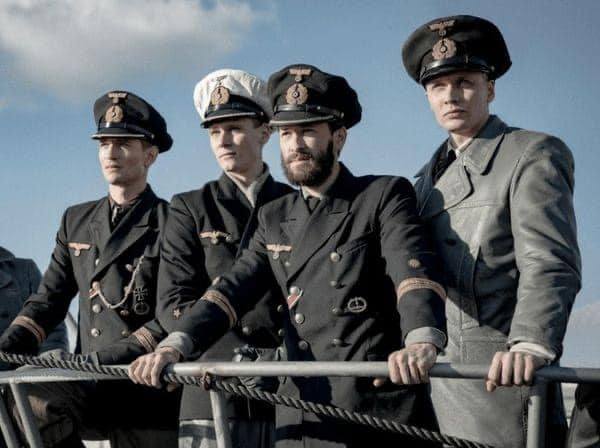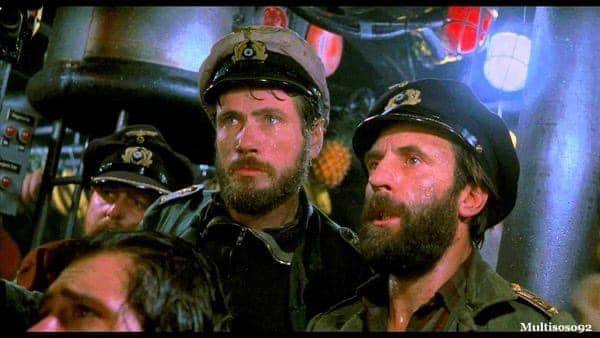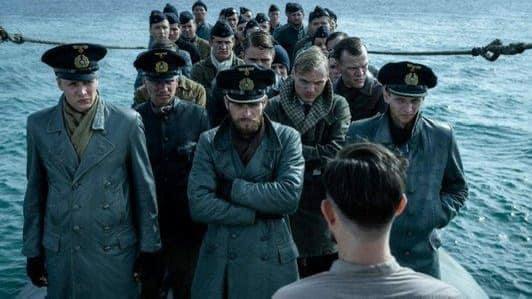“Das Boot” (1981): A Masterpiece of Submarine Warfare Cinema

Das Boot is a 1981 German war film directed by Wolfgang Petersen, widely regarded as one of the greatest and most realistic war films ever made. Based on the 1973 novel by Lothar-Günther Buchheim, who wrote from his own experiences as a war correspondent aboard a German U-boat during World War II, the film offers a harrowing depiction of life aboard a submarine during wartime.
The Plot
Set during World War II, Das Boot follows the crew of U-96, a German U-boat, on a perilous patrol mission in the Atlantic Ocean. The crew, led by their seasoned and weary Captain (played by Jürgen Prochnow), faces constant danger from British naval forces, while dealing with the psychological strain of long periods of isolation beneath the ocean’s surface. The film delves deep into the emotional and mental toll that prolonged underwater warfare takes on the men, who are trapped in the claustrophobic confines of the submarine, always aware that they could be moments away from death.
At the heart of the film is the constant threat of enemy depth charges, which create nerve-wracking tension throughout. The U-boat must evade detection while launching attacks on Allied convoys, all while being hunted by enemy ships equipped with advanced sonar technology. Each encounter with enemy forces escalates into a deadly game of cat and mouse, with the crew’s survival often hanging by a thread.
Claustrophobia and Psychological Strain
One of the film’s most distinctive features is its claustrophobic atmosphere. Most of Das Boot takes place inside the cramped, dimly lit, and oppressively tight quarters of the U-boat, where the crew lives and works in close proximity for extended periods. The narrow corridors, low ceilings, and tight spaces amplify the tension and anxiety, reflecting the psychological strain of being constantly under threat and unable to escape.

The psychological toll on the crew becomes one of the film’s central themes. The men onboard the U-boat range from experienced veterans to fresh-faced recruits, and Das Boot vividly portrays how their mental states evolve as the mission becomes more dangerous and seemingly hopeless. The crew’s growing fatigue, fear, and despair are palpable, but so is their camaraderie, which provides moments of lightness and human connection amid the chaos.
A Complex Portrait of War
While Das Boot is an undeniably intense and thrilling war film, it also offers a nuanced, humanistic portrayal of the German submariners. Unlike many World War II films that cast the Germans solely as villains, Das Boot presents the U-boat crew as ordinary men fighting in a war they didn’t start, with many of them deeply skeptical of the Nazi regime. The film highlights the crew’s disillusionment with the war, showing that they are simply trying to survive, rather than zealously fighting for a cause. This perspective adds depth to the characters and creates a powerful anti-war message.
Jürgen Prochnow’s portrayal of the Captain is a standout performance. As the experienced leader of the crew, he exudes a calm authority but is also haunted by the knowledge that every mission could be their last. His character is a study in stoicism, as he quietly carries the burden of responsibility for the lives of his men while confronting the brutal realities of the war.
Masterful Direction and Cinematography
Wolfgang Petersen’s direction is nothing short of masterful. His attention to detail and commitment to realism immerse the audience in the world of submarine warfare. The film was shot on detailed, full-scale replicas of a U-boat, which adds to the authenticity and sense of immersion. Petersen’s decision to shoot much of the film using handheld cameras heightens the feeling of confinement and unease, as the camera moves with the crew through the submarine’s narrow passageways.

The sound design of Das Boot is another critical element in building tension. The creaking of the submarine’s hull under pressure, the ominous pinging of enemy sonar, and the terrifying explosions of depth charges all contribute to a visceral experience that keeps the audience on edge. These sounds are as important as the visuals in creating the film’s suffocating atmosphere of fear and suspense.
The film’s cinematography, by Jost Vacano, also stands out, especially in the way it captures the dark, cramped conditions of the submarine, contrasting it with the vast, oppressive ocean above. The lighting is often dim and naturalistic, adding to the sense of realism and reinforcing the men’s isolation from the world above.
Themes of Survival and Futility
At its core, Das Boot is a story about survival. The crew of U-96 is constantly on the edge of death, whether from enemy attacks or the crushing depths of the ocean. The film explores how the men cope with the ever-present fear of death, and how they find ways to maintain their humanity in such a dehumanizing environment.
The film also grapples with the futility of war. Although the crew achieves tactical victories during the mission, these victories are overshadowed by the sheer hopelessness of their situation. By the film’s conclusion, the emotional and physical toll on the crew is devastating, and the audience is left with a powerful sense of the senselessness of the conflict.
Legacy and Impact
Upon its release, Das Boot was hailed as a groundbreaking war film. Its meticulous attention to historical accuracy, combined with its intense action and psychological depth, made it a critical and commercial success. The film was nominated for six Academy Awards, including Best Director and Best Cinematography, which was a major achievement for a German-language film.
Das Boot has since become one of the most iconic submarine films of all time and remains a landmark in the war genre. Its influence can be seen in subsequent films about submarine warfare, and its realistic portrayal of life on a U-boat continues to resonate with audiences today.
Conclusion
Das Boot is a cinematic masterpiece that goes beyond the typical war film. It combines gripping action with a deep exploration of the human psyche under extreme duress, all while delivering a powerful anti-war message. Wolfgang Petersen’s direction, the standout performances, especially from Jürgen Prochnow, and the film’s technical brilliance have cemented Das Boot as one of the most important and enduring war films in cinema history.











